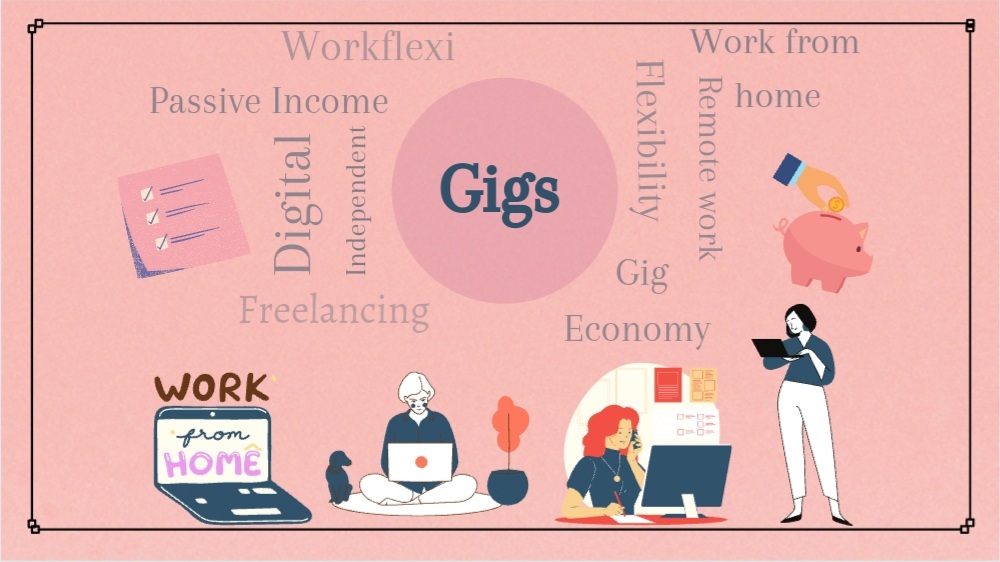Future Trends in Gig Work: Adapting to AI and Automation
The gig economy is no longer just a buzzword; it has become a dominant force in the modern labor market. Platforms like Workflexi, Upwork, and Freelancer have revolutionized how individuals and businesses connect, enabling a flexible workforce model that thrives on diversity and innovation. As we look toward the future, two pivotal forces are reshaping this landscape: artificial intelligence (AI) and automation. These technologies are changing the definition of employment itself, not just how gigs are sourced and carried out.
In this blog, we explore how AI and automation are impacting gig work, the trends shaping the future, and how gig workers and businesses can adapt to stay ahead in an ever-evolving market.
The Current Landscape of Gig Work
Gig work offers unparalleled flexibility, allowing professionals to set their schedules, choose their projects, and often work remotely. However, this freedom comes with challenges like income instability, limited benefits, and the need for constant upskilling. The rise of AI and automation is adding another layer of complexity to this ecosystem, presenting both opportunities and risks.
Today, gig platforms leverage AI for tasks like job matching, fraud detection, and performance analytics, making it easier for freelancers to find work that aligns with their skills. At the same time, automation is streamlining repetitive tasks, enabling gig workers to focus on high-value activities.
The Role of AI in Shaping Gig Work
AI has become the backbone of most digital platforms, and its influence on gig work is profound. Here are some key ways AI is impacting the gig economy:
1. Smarter Job Matching
AI-powered algorithms are enhancing how freelancers and clients connect. By analyzing profiles, skills, and past performance, platforms like Workflexi can recommend gigs that best fit a worker’s expertise, increasing the likelihood of successful collaborations.
2. Skill Development and Upskilling
AI-driven tools are helping gig workers stay competitive. Platforms now offer personalized learning paths, suggesting courses and certifications based on market demand and individual career goals.
3. Improved Productivity
Gig workers can use AI tools to automate mundane tasks like invoicing, scheduling, and data entry. It allows them to concentrate more on the strategic and creative elements of their work.
4. Enhanced Client Relationships
AI analytics help freelancers understand client needs better by providing insights into project goals, feedback trends, and performance metrics, fostering stronger professional relationships.
The Impact of Automation on Gig Work
While AI is enhancing capabilities, automation is eliminating repetitive and manual tasks. This is particularly evident in fields like data analysis, graphic design, and content creation, where tools powered by automation can perform tasks faster and more accurately.
1. Rise of Gig Automation Tools
Freelancers now have access to tools like automated graphic design platforms, content generation software, and coding assistants. These technologies save time and allow workers to deliver high-quality output.
2. Changing Job Roles
The kinds of gigs that are offered are changing due to automation. Routine tasks are being phased out, while demand is rising for roles requiring creativity, critical thinking, and problem-solving.
3. New Opportunities in Tech Maintenance
The proliferation of automation systems has created a demand for specialists who can manage, maintain, and optimize these tools, opening new avenues for tech-savvy gig workers.
Challenges in Adapting to AI and Automation
Although there are several advantages to integrating automation and AI, gig workers still face certain difficulties:
1. Job Displacement
Automation has the potential to completely replace some jobs, especially those that need repeated work. Gig workers in such fields must pivot to new skill sets to remain relevant.
2. Income Inequality
Highly skilled freelancers who can leverage advanced tools will likely command higher rates, while others may struggle to keep pace with the changing demands.
3. Learning Curve
Automation has the potential to completely replace some jobs, especially those that need repeated work. Freelancers may find it daunting to invest in learning new technologies amidst tight project deadlines.
4. Ethical and Privacy Concerns
Large volumes of data are used by AI systems, which raises concerns about algorithmic bias and data privacy. Gig workers may face challenges in ensuring their data is protected and that AI systems treat them fairly.
Future Trends in Gig Work
The gig economy is evolving rapidly, and several trends are emerging as AI and automation become more entrenched:
1. Hybrid Work Models
As automation takes over repetitive tasks, gig workers will collaborate more closely with AI systems, creating hybrid workflows that combine human creativity with machine efficiency.
2. Niche Specialization
Generalist roles are declining in favor of niche specializations. Gig workers who focus on specific industries or advanced skills like AI integration will have a competitive edge.
3. AI-Driven Marketplaces
Gig platforms will increasingly use AI to predict market trends, suggest emerging skills, and guide freelancers toward high-demand opportunities.
4. Increased Focus on Soft Skills
As automation handles technical tasks, soft skills like communication, adaptability, and emotional intelligence will become more valuable for gig workers.
5. Globalization of Gig Work
AI-powered translation and collaboration tools are enabling gig workers to tap into international markets, breaking down language and cultural barriers.
How Gig Workers Can Adapt
Adapting to the AI and automation revolution requires proactive effort. Here are actionable steps gig workers can take to stay competitive:
1. Continuous Learning
Invest in upskilling through online courses, workshops, and certifications. Focus on areas like AI, machine learning, and other emerging technologies relevant to your field.
2. Leverage Automation Tools
Embrace tools that streamline workflows, such as project management software, AI writing assistants, and design automation platforms.
3. Build a Personal Brand
Make a difference by using a professional portfolio, client endorsements, and a strong web presence to highlight your special abilities and experiences.
4. Collaborate with AI
Instead of seeing AI as a rival, learn how to use it as a partner. Examine how you may use AI into your workflow to boost creativity and productivity.
5. Stay Informed
Stay up to date with market demands, technology developments, and industry trends. Being knowledgeable will enable you to foresee changes and adjust your tactics appropriately.
How Businesses Can Adapt
Businesses that rely on gig workers must also adapt to the AI and automation landscape:
1. Invest in Training
Provide gig workers with access to training resources that help them adapt to new technologies.
2. Foster Collaboration
Encourage collaboration between human workers and AI systems to create more efficient workflows.
3. Ensure Ethical Practices
Adopt transparent and ethical AI practices to build trust with freelancers, ensuring fair treatment and data privacy.
4. Focus on Quality Over Cost
While automation reduces costs, businesses should prioritize quality by hiring skilled freelancers who can leverage these technologies effectively.
Due to the quick uptake of automation and artificial intelligence, the gig economy is about to enter a revolutionary phase. Even if these technologies have drawbacks, they also present unmatched chances for development, creativity, and effectiveness. Gig workers who embrace change, invest in upskilling, and adapt to new tools will thrive in this evolving landscape.
We are committed to giving businesses and independent contractors the tools they need to confidently handle this transition. By staying informed and proactive, we can shape a future where gig work continues to be a dynamic and fulfilling career choice.
Want to learn more about the benefits of hiring tech freelancers through a verified platform? read the blog


